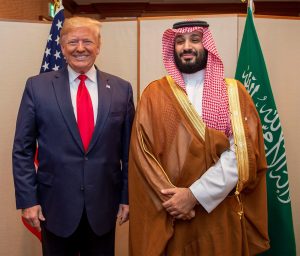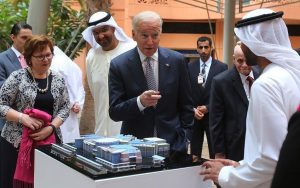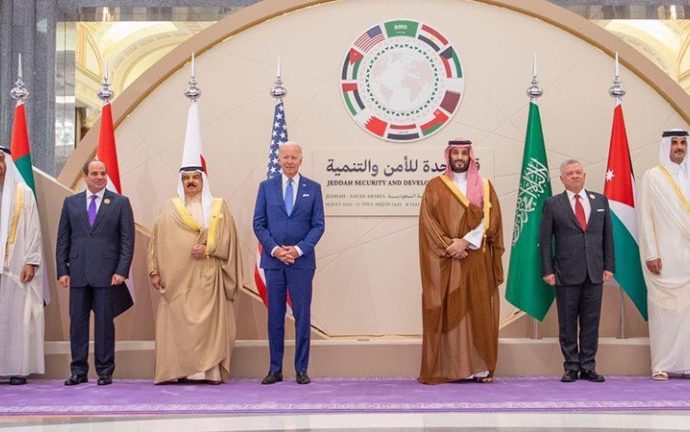The origins of US Middle East policy can be traced back to the Cold War era, where the primary objective was to counter Soviet influence in the region. The Middle East, rich in oil resources and strategically located, became a focal point of US foreign policy. American support for regimes that were anti-communist, regardless of
The origins of US Middle East policy can be traced back to the Cold War era, where the primary objective was to counter Soviet influence in the region. The Middle East, rich in oil resources and strategically located, became a focal point of US foreign policy. American support for regimes that were anti-communist, regardless of their domestic policies, was a hallmark of this period. This policy was driven by the need to ensure that the Middle East did not become a Soviet sphere of influence, which could threaten global oil supplies and the balance of power. The US also sought to protect the state of Israel, which was seen as a democratic ally in a predominantly autocratic region.
The impact of 9/11 on US Middle East policy shifts was profound and immediate. The terrorist attacks on US soil led to a significant reevaluation of American foreign policy priorities. The focus shifted from containing communism to combating terrorism. The US launched military operations in Afghanistan and Iraq, aimed at dismantling terrorist networks and promoting democratic governance as a means to combat the root causes of extremism. The events of 9/11 also led to the implementation of the Patriot Act and other measures aimed at enhancing domestic security, which had far-reaching implications for US engagement in the Middle East.
Post-Cold War Policy Adjustments

Image by : Yandex
As the Cold War came to an end, US Middle East policy had to adapt to the new global dynamics. The dissolution of the Soviet Union removed the primary adversary that had shaped US policy for decades. In this new era, the US sought to promote stability and economic development in the Middle East, recognizing that regional conflicts and instability could have global repercussions. This period saw increased US involvement in peace processes, such as the Oslo Accords between Israel and the Palestinians, and efforts to contain regional powers like Iran and Iraq.
The shifts in US Middle East policy after the Cold War end were marked by a more nuanced approach. The US began to emphasize the importance of economic and political reforms in the region, recognizing that authoritarian regimes could be breeding grounds for extremism. The Gulf War in 1991 was a significant event, where the US led a coalition to liberate Kuwait from Iraqi occupation, demonstrating its commitment to regional security and the protection of its allies. The post-Cold War period also saw increased efforts to address the Arab-Israeli conflict, with the US playing a key role in facilitating negotiations.
Impact of 9/11 on Policy
The increased military focus in US Middle East policy post-9/11 was evident in the invasions of Afghanistan and Iraq. The US aimed to dismantle terrorist networks and eliminate regimes that were perceived as threats to global security. The military interventions were part of a broader strategy to reshape the Middle East, promoting democratic governance as a means to counter extremism. This period also saw the establishment of military bases in the region, enhancing the US’s ability to project power and respond to emerging threats.
Enhanced counterterrorism efforts in US Middle East policy became a central focus after 9/11. The US implemented a range of measures aimed at disrupting terrorist financing, enhancing intelligence sharing with allies, and improving border security. The creation of the Department of Homeland Security and the implementation of the Patriot Act were significant domestic measures that had implications for US foreign policy. The focus on counterterrorism also led to increased cooperation with regional allies, who were seen as critical partners in the fight against extremism.
Shifts During the Obama Administration
During the Obama administration, US Middle East policy saw a pivot towards diplomatic engagement. The administration emphasized the importance of dialogue and negotiation, seeking to resolve conflicts through diplomatic means rather than military intervention. This approach was evident in the negotiations with Iran, which culminated in the Joint Comprehensive Plan of Action (JCPOA) aimed at curbing Iran’s nuclear program. The Obama administration also sought to rebuild relationships with traditional allies in the region, emphasizing the importance of mutual respect and cooperation.
The US Middle East policy under the Obama administration also placed a strong emphasis on multilateral coalitions. Recognizing that unilateral actions could have limited effectiveness, the administration sought to build broad coalitions to address regional challenges. This approach was evident in the efforts to combat ISIS, where the US led a coalition of international partners to degrade and ultimately defeat the terrorist organization. The emphasis on multilateralism was also reflected in the administration’s approach to the Israeli-Palestinian conflict, where the US worked with international partners to facilitate negotiations.
Trump Administration’s Middle East Strategy

Image by : Yandex
Under the Trump administration, US Middle East policy saw significant shifts. The administration adopted a more transactional approach, emphasizing the importance of economic and security interests. This was evident in the decision to move the US embassy in Israel from Tel Aviv to Jerusalem, a move that was seen as a strong show of support for Israel but also sparked controversy and protests in the region. The Trump administration also pursued a maximum pressure campaign against Iran, withdrawing from the JCPOA and reimposing sanctions aimed at curbing Iran’s regional influence and nuclear ambitions.
The impact of US Middle East policy on regional stability under the Trump administration was mixed. While the administration achieved some successes, such as brokering normalization agreements between Israel and several Arab states, critics argued that the transactional approach could undermine long-term stability. The withdrawal of US troops from Syria and the reduction of military presence in other parts of the region raised concerns about a power vacuum that could be exploited by extremist groups or regional rivals. The administration’s focus on short-term gains sometimes came at the expense of broader strategic objectives.
Biden Administration’s Approach

Image by : Yandex
The Biden administration’s approach to US Middle East policy shifts has been characterized by a return to traditional diplomacy and multilateralism. The administration has emphasized the importance of rebuilding alliances and partnerships that were strained under the previous administration. Efforts to re-engage with Iran and revive the JCPOA have been a key focus, with the aim of preventing nuclear proliferation and reducing regional tensions. The Biden administration has also sought to address the humanitarian crises in the region, providing aid and support to conflict-affected populations.
US Middle East policy shifts under the Biden administration’s new strategies have also included a focus on human rights and democratic governance. The administration has emphasized the importance of holding regional actors accountable for human rights abuses and promoting political reforms. This approach has been evident in the administration’s stance on the conflict in Yemen, where the US has called for a ceasefire and increased humanitarian assistance. The Biden administration’s policies reflect a broader commitment to addressing the root causes of instability and promoting long-term peace and security in the region.
Future Directions and Challenges
Evaluating new dimensions of US Middle East policy shifts involves understanding the complex and evolving dynamics of the region. The US will need to navigate a range of challenges, from the rise of new regional powers to the ongoing threat of terrorism. The Biden administration’s focus on diplomacy and multilateralism will be critical in addressing these challenges, but it will also require a nuanced understanding of the diverse interests and perspectives of regional actors. The US will need to balance its strategic interests with its commitment to human rights and democratic governance.
Addressing geopolitical challenges in US Middle East policy will require a comprehensive and adaptive approach. The region remains a focal point of global competition, with powers like Russia and China seeking to expand their influence. The US will need to strengthen its alliances and partnerships, while also being prepared to address emerging threats. This will involve a combination of military, diplomatic, and economic tools, as well as a commitment to working with international partners. The future of US Middle East policy will depend on the ability to navigate these complex dynamics and promote a stable and prosperous region.
















